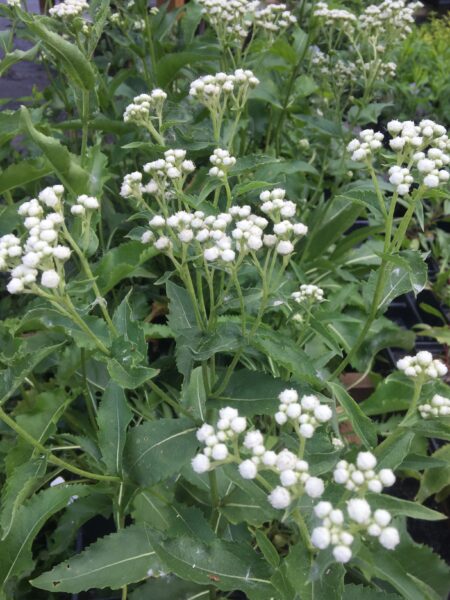This heat-loving native blooms June through September and prefers a sunny location. White flower clusters attract all sorts of pollinators but especially native bees, including sweat bees, mining bees, small carpenter bees and yellow-faced bees. Also a fly favorite, attracting soldier flies and other pollinator and predatory species that, in larval form, are valuable pest-eating insects.
The shape of the flower cluster makes a cushy landing pad for butterflies, and this plant plays particularly well with butterfly weed (Ascepias tuberosa) and contrasts beautifully with the fine textured foliage of bluestar (Amsonia hubrichtii).
Also called wild feverfew, wild quinine was historically used by Native Americans as well as the US Army as a medicinal plant during World War I to treat malaria.
